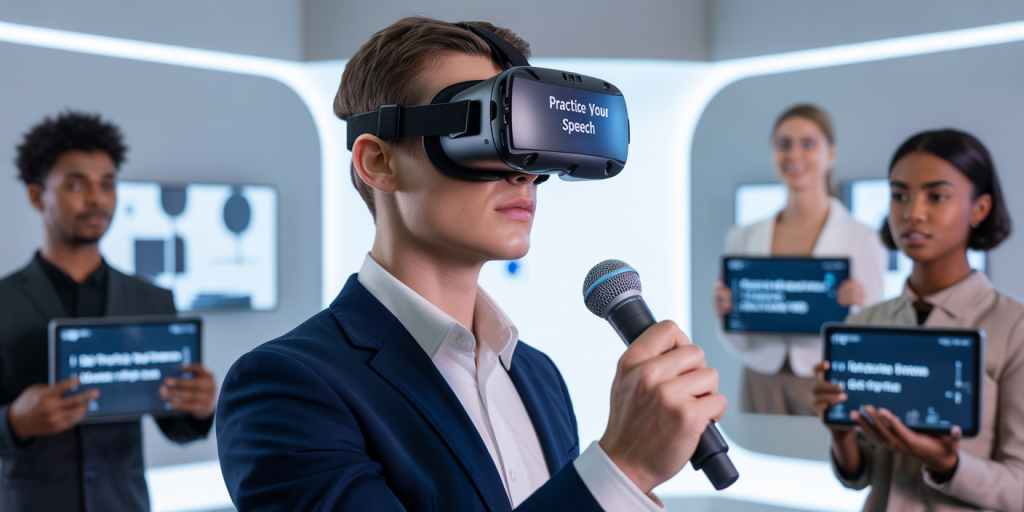Mastering the Art of Public Speaking for Career Success
Public speaking remains one of the most influential skills shaping career trajectories in today’s globalized and competitive workforce. According to a 2023 survey by the National Association of Colleges and Employers, 70% of employers rate communication skills — particularly public speaking — as essential in potential hires. This skill influences leadership opportunities, client relationships, and workplace dynamics. By mastering the art of public speaking, professionals not only boost their confidence but also position themselves as thought leaders, collaborators, and innovators within their industries.
Despite its importance, many professionals struggle with public speaking anxiety and underdeveloped presentation techniques. The good news is that effective public speaking is a learnable skill that, when honed correctly, can accelerate career growth. This article explores practical strategies, real-world scenarios, and future trends to help you leverage public speaking and maximize career success.
The Psychological Impact of Public Speaking in Professional Settings
Public speaking triggers a fight-or-flight response in many individuals, which can manifest as nervousness or even fear. Studies published in the *Journal of Anxiety Disorders* report that approximately 75% of people experience glossophobia — fear of public speaking. Overcoming this psychological barrier is fundamental to career advancement, as effective communication often separates emerging leaders from others.
Real-world cases highlight how mastering this art transforms careers. Sheryl Sandberg, COO of Facebook, has credited much of her professional rise to speaking engagements that allowed her to establish authority and inspire change. Similarly, Elon Musk’s ability to articulate complex ideas in keynote presentations drives investor confidence and employee motivation. Both examples underscore the link between public speaking prowess and perceived competence and leadership.
Improving public speaking skills reduces anxiety over time. Utilizing visualization techniques, mindfulness practices, and gradual exposure can condition professionals to feel more at ease when presenting. For instance, practicing speeches in front of smaller groups before scaling up to larger audiences helps build confidence incrementally.
Key Components of Effective Public Speaking for Career Growth
Effective public speaking is not solely about fluent articulation but also involves preparation, audience connection, and delivery. Each component plays a vital role in influencing how messages are received and acted upon.
Preparation includes researching the topic thoroughly and understanding the audience’s needs. A case in point is Satya Nadella’s transformation of Microsoft’s culture by consistently tailoring speeches to different stakeholder groups, reinforcing strategic goals while addressing specific concerns.
Audience connection is driven by emotional intelligence, involving recognizing audience reactions and adjusting tone, pace, or content accordingly. A 2022 Gallup study found that 60% of highly engaged teams have leaders who excel in empathetic communication during presentations.
Delivery involves body language, tone modulation, and clarity. TED Talks exemplify this with speakers like Simon Sinek, who uses deliberate pauses, hand gestures, and storytelling to captivate diverse audiences. Emulating such strategies fosters a dynamic connection, essential for career-related presentations such as pitches, project updates, or networking events.

| Component | Description | Real-World Example | Impact on Career |
|---|---|---|---|
| Preparation | Research & audience analysis | Satya Nadella | Strategic clarity |
| Audience Connection | Emotional intelligence & adaptability | Gallup study leaders | Increased team engagement |
| Delivery | Body language & vocal variety | Simon Sinek TED Talks | Audience captivation |
Building Confidence Through Consistent Practice and Feedback
Consistent practice is the cornerstone of public speaking mastery. Many professionals mistakenly believe that being an expert in their field automatically equates to being an engaging speaker. However, without structured rehearsal and reflective feedback, presentations often fall flat.
Consider the case of Indra Nooyi, former CEO of PepsiCo, who attributes part of her success to practicing speeches in front of trusted colleagues to receive candid feedback. This iterative process refined her ability to simplify complex business strategies, making them accessible and inspiring.
Interactive practice sessions, such as participating in local Toastmasters clubs or virtual speaking groups, provide constructive environments for growth. The 2023 Toastmasters International report highlights that 85% of their members experience measurable improvements in public speaking confidence within six months.

Incorporating video recordings helps self-assess delivery style, identify distracting mannerisms, and improve eye contact. Additionally, seeking mentorship from experienced speakers accelerates learning by offering actionable tips and moral support.
Leveraging Technology to Enhance Public Speaking Skills
The integration of technology offers unprecedented opportunities for those aiming to master public speaking. Virtual reality (VR) platforms simulate speaking environments, enabling users to practice in front of virtual audiences ranging from boardrooms to auditoriums, mitigating performance anxiety.
For example, Mursion, a VR training company, uses AI-driven avatars to provide real-time feedback during presentations. Corporate clients like IBM have adopted this technology for leadership training, reporting a 30% increase in employees’ public speaking confidence.
Furthermore, AI-powered speech coaching apps analyze tone, pace, filler word usage, and speech clarity. Orai, one such tool, uses machine learning to offer personalized improvement suggestions after each practice session.
Webinars and video conferencing platforms also expand opportunities to practice and showcase public speaking in hybrid and remote work environments. Harvard Business Review notes a 45% rise in virtual presentations in 2023, making adaptability across platforms a vital skill.
| Technology Tool | Purpose | Corporate Example | Measurable Benefit |
|---|---|---|---|
| Virtual Reality | Simulated practice environments | IBM with Mursion | +30% speaking confidence |
| AI Speech Coaching | Personalized speech analysis | Individual professionals | Improved tone, pace, clarity |
| Video Conferencing | Remote presentation practice | Global teams | Enhanced flexibility and reach |
Overcoming Common Public Speaking Challenges in the Workplace

Public speaking challenges vary from stage fright to cultural communication barriers. Workplace dynamics add layers of complexity due to hierarchical differences, varying audience expectations, and potential language diversity.
One prevalent challenge is managing nervousness. According to a 2022 LinkedIn Workplace Learning report, 40% of employees avoid speaking opportunities due to anxiety. Practical approaches such as diaphragmatic breathing exercises, positive self-talk, and preparation rituals help mitigate stress responses.
Cultural nuances, especially in multinational teams, require speakers to avoid idiomatic expressions and jargon that may confuse international audiences. For instance, a multinational team leader at Google tailors presentations by localizing key messages and encouraging intercultural feedback, thereby fostering inclusivity and clearer understanding.
Gender dynamics also influence public speaking. Research in the *Journal of Business Communication* reveals that women may face unconscious bias in presentations, requiring conscious strategies to assert authority and build credibility. Role models like Michelle Obama illustrate how personal storytelling and authenticity can break down such barriers.
Effective handling of Q&A sessions often makes or breaks professional presentations. Preparing for potential questions and practicing concise, respectful responses elevates speaker credibility and audience trust.
Future Perspectives: Public Speaking’s Evolving Role in Career Development
The role of public speaking in career success is poised to evolve significantly with technological advancements and shifting workplace expectations. Automation may reduce routine communication tasks, but nuanced, persuasive, and authentic speaking remains an irreplaceable human skill.
Emerging trends suggest that storytelling and emotional engagement will become even more critical as remote and hybrid work environments demand stronger virtual presence. LinkedIn data from early 2024 indicates a 50% increase in demand for communication coaches in tech industries, highlighting growing recognition of speaking abilities as a strategic asset.
Moreover, cross-cultural communication competencies linked with public speaking will expand as global collaboration intensifies. Professionals adept at navigating diverse linguistic and cultural contexts through effective speaking will have a distinct advantage.
Continuous learning, supported by AI coaching, immersive simulations, and peer networks, will democratize access to elite public speaking training. This broader accessibility may reshape competitive career landscapes, emphasizing communication excellence across all levels.
As organizations prioritize leadership development aligned with communication skills, future employees will likely need to integrate public speaking proficiency within broader emotional intelligence and digital literacy frameworks.
—
Mastering the art of public speaking is no longer optional—it is a career imperative. By understanding psychological impacts, focusing on core speaking components, embracing practice and technology, and overcoming challenges, professionals can unlock new levels of career success. Looking ahead, ongoing skill refinement and adaptability will define how public speaking shapes leadership influence and professional growth in a fast-changing world.
